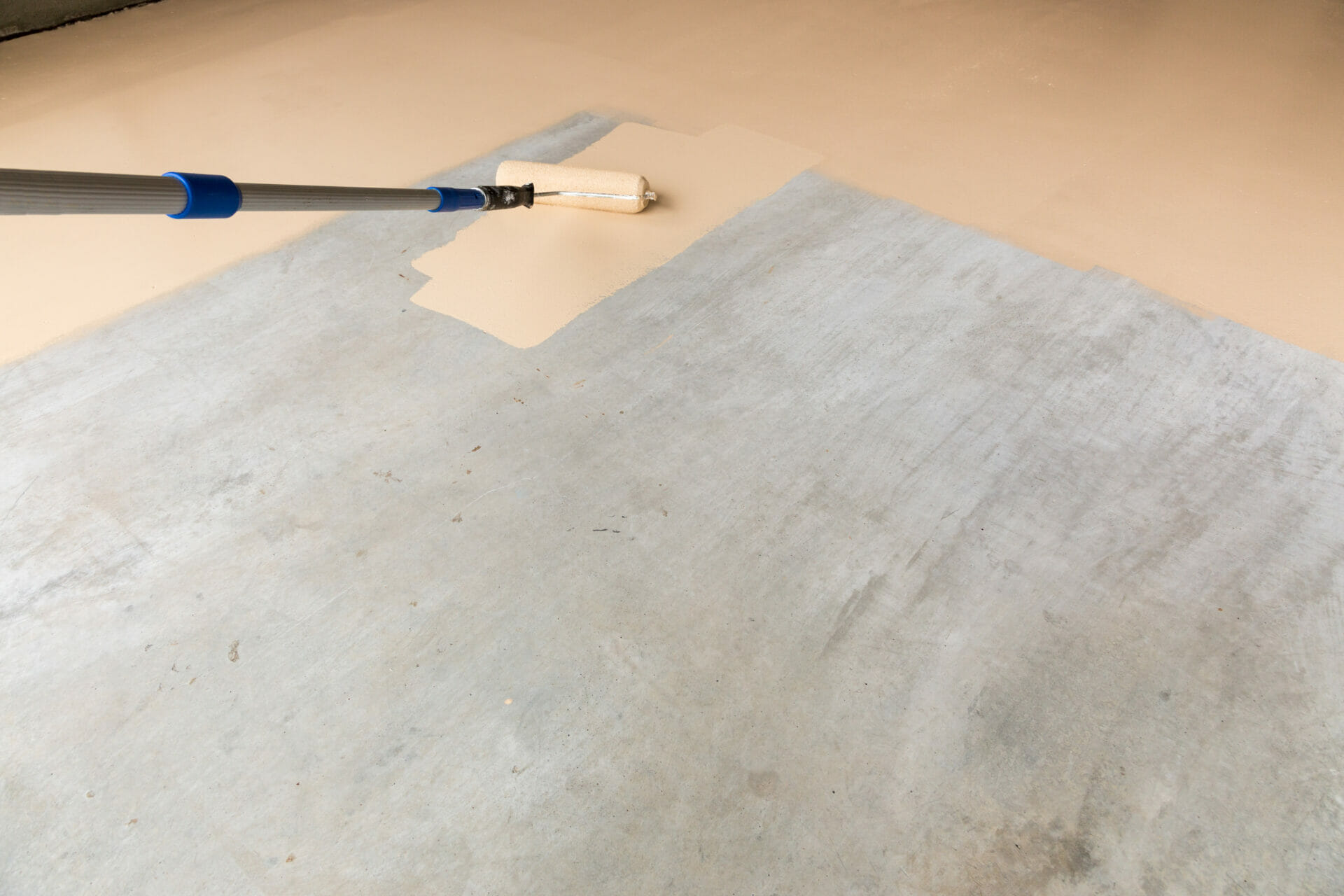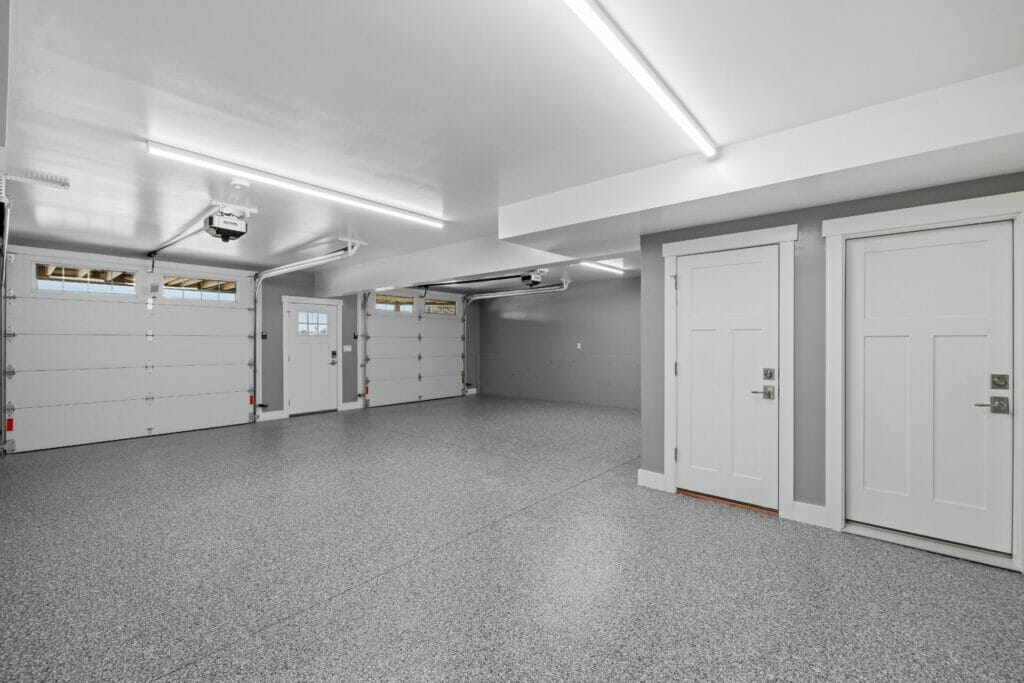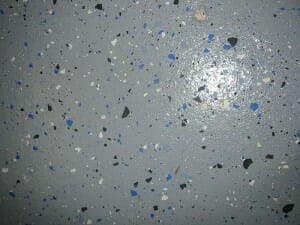
Your garage might be the most underappreciated part of your home. Yet, its significance is undeniable. While safeguarding vehicles, tools, and often acting as additional storage, its floor faces tremendous stress daily.
From the weight of vehicles to the occasional oil drip, these surfaces see a lot of action. Hence, maintaining your garage floor isn’t merely a matter of aesthetics; it’s about ensuring longevity and durability. Among the plethora of choices available for garage floors, epoxy stands out.
Its resilient nature combined with its sleek appearance makes it a favorite. For those wanting an extra layer of protection and aesthetics, adding a coat of paint or epoxy can work wonders.
At its essence, what is garage floor paint? Garage floor paint isn’t your regular wall paint. It’s a specially formulated mixture designed with the primary purpose of adhering to and protecting concrete surfaces. This is a paint that’s expected to endure more than just weather; it has to withstand chemicals, resist abrasions, and tolerate the heavy weight of vehicles.
Now, why might someone want their concrete floors painted? There’s the undeniable appeal of transformation. A well-painted floor can dramatically alter the appearance of a dull, stained, or even cracked garage. With the vast range of colors and finishes on offer, you can either go for a look that complements your home’s aesthetics or even make a bold statement.
Practicality comes into play. Painted, or stained and polished concrete, floors tend to be smoother. This means they are far easier to sweep and clean.
Say goodbye to grueling scrub sessions trying to rid the floor of oil spills or accumulated grime. On a painted surface, cleaning becomes a breeze.
Protection is another massive incentive. A painted floor doesn’t just look good; it acts as an additional protective layer against potential threats. Spills, stains, and minor abrasions that would usually leave a mark on plain concrete patches can now be mitigated.
We must acknowledge the strides made in environmentally conscious choices in the realm of garage floor paints. Modern epoxy-based formulations are much more eco-friendly. These paints tend to produce fewer odors, reduce toxins, and overall, have a diminished carbon footprint, aligning well with the global shift towards sustainable choices.
Delving into the world of garage floor treatments, epoxy emerges as the gold standard. Why? For starters, consider its unparalleled durability.
Epoxy isn’t just about that glossy finish; it’s about resistance. Whether it’s heat from the tires, potential staining agents, or the daily foot and vehicle traffic, epoxy stands tall, showing minimal signs of wear.
When you place epoxy in comparison with other floor paints, the difference is evident. Whether you’re seeking a high gloss or a satin finish, epoxy provides a versatility that few other paints can match. Its finishes are not just about aesthetics but about offering an enhanced level of protection.
Let’s dispel some myths about epoxy. In earlier days, concerns floated around about epoxy’s performance under prolonged UV exposure. However, technology has progressed, and modern epoxy floor coating formulations have evolved. Now, most epoxy coatings are crafted with protective agents that shield against UV rays, ensuring that the shine and finish remain intact even under constant exposure.

Imagine painting on a canvas full of smudges, dust, and stains. The result wouldn’t be a masterpiece, right? Similarly, when it comes to your garage floor, the canvas – or in this case, the concrete – needs to be pristine. An impeccably clean surface ensures that the epoxy paint adheres well and lasts longer.
Now, a simple mop or sweep won’t suffice. For a deep cleanse, utilizing a pressure washer or power washer can be game-changing. These tools help in removing deep-seated dirt, grease, and even old paint residues.
Think of it as giving your garage a spa day! But, like all spa days, there are precautions. Always wear safety goggles when operating a pressure washer. Protecting your eyes from any flying debris or chemicals is paramount.
If preparation is the key, then priming is the lock that holds everything together. Priming is not just an additional step; it’s a foundation. It ensures that the epoxy paint bonds well to the concrete, giving you a smooth and long-lasting finish.
To prime, grab a paint roller. It allows for an even spread without leaving behind any streaks or bubbles. After applying, patience is your best friend. Let the primer settle and dry time of about 24 hours.
With your floor prepped and primed, it’s painting time. Start by mixing your epoxy paint thoroughly. Consistency is key to achieving that perfect finish.
Pour the mixed paint into a paint tray. This ensures that you get just the right amount on your paint roller for an even application.
When applying, consider the finish you desire. Whether you’re chasing the subtle elegance of a satin finish or the striking brilliance of high gloss, your application method and the product choice matter.
Another advantage of a smooth epoxy finish? Cleaning becomes a cinch! Dust, debris, and spills glide right off, making maintenance a breeze.
As tempting as it might be to start using the freshly painted garage, patience, once again, is crucial. The paint needs to dry and set completely. And while it’s drying, a simple tip can save you a lot of trouble: prop a foam noodle or a soft fabric against the bottom of your garage door. This ensures that the paint doesn’t stick to it.
Additionally, consider adding a layer of rust oleum. This acts as a shield, offering an extra layer of protection. With rust oleum, you’re not just getting a high gloss finish; you’re ensuring a durable finish resistant to chipping and staining.
There’s a unique sense of satisfaction in doing things yourself. DIY garage painting projects can be cost-effective, and they provide a sense of accomplishment. But, while the spirit of DIY is commendable, it’s also essential to recognize when to call in the cavalry.
If your garage floor has significant cracks, pits, or if you’re unfamiliar with the intricacies of epoxy paints, hiring a professional might be the best route. After all, sometimes, the best DIY project is knowing when to delegate.
With a fresh coat of epoxy paint, your garage floor can go from drab to fab, ensuring durability while amplifying aesthetics. Whether you take the DIY route or seek professional assistance, the results will undoubtedly be rewarding.

Once you’ve revitalized your garage floor with a fresh coat of paint, the journey doesn’t end there. Maintaining that pristine look and functionality requires a bit of care. Here’s how:
1. Keep the Surface Easier to Clean:
A smooth surface is easier to clean. Regularly sweep or lightly mop the floor to prevent dirt and grime buildup. For tough stains or spills, use a gentle cleaner and soft cloth. Avoid abrasive tools that could scratch or damage the epoxy layer.
2. Avoiding Damage:
Epoxy-coated floors are strong and durable, but not indestructible. Prevent damage by avoiding dragging heavy equipment or sharp objects. Use soft pads or mats in high-traffic or storage areas to minimize wear and tear.
3. Regular Checks and Potential Touch-ups:
Over time, even the sturdiest finishes can wear down. Schedule regular checks for signs of wear, chipping, or fading. Detecting issues early allows for quick touch-ups instead of full re-coating.